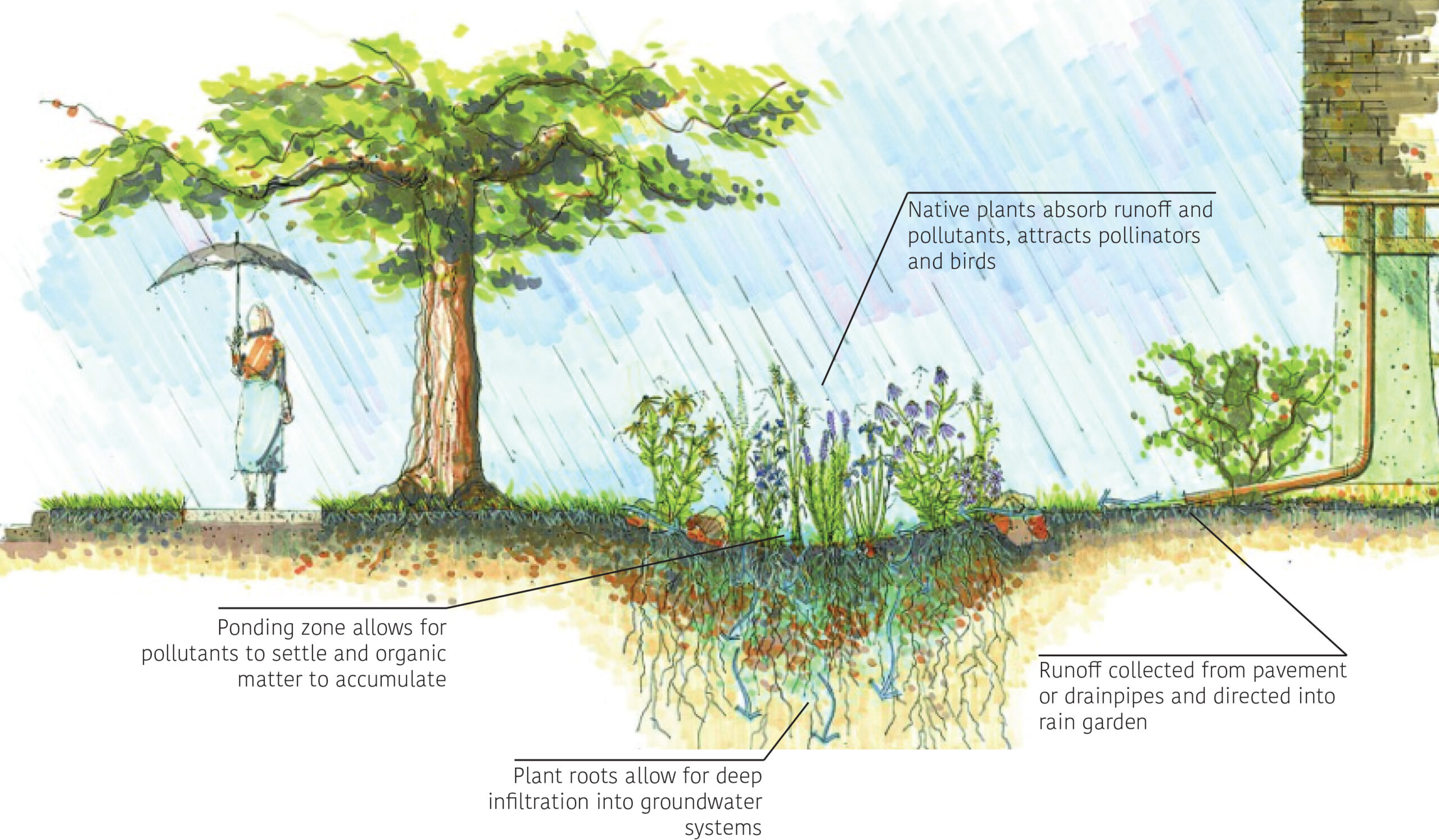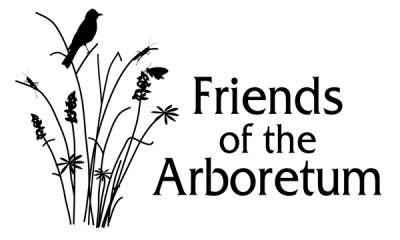What is a Rain Garden?
A rain garden is a small, planted depression that is meant to capture and infiltrate surface runoff water before it reaches storm drains and enters rivers and lakes.
Purpose:
A rain garden retains runoff before it leaves the yard and helps absorb water into the ground, while filtering out many pollutants. This water helps replenish groundwater rather than entering storm drains, all while gathering surface pollutants. This prevents unfiltered water from entering lakes and streams. Leaves, soil, grass, fertilizer, pesticides, waste, oil, and salt are just some of these pollutants that can be removed from surface runoff.
Not only are rain gardens great for prevention of pollutants entering natural surface water, the abundance of flowers, seed pods and habitat they create are great for pollinators, birds and small mammals. Different species that bloom throughout the spring to fall will provide constant food, shelter and water for these species.

Graphic by Emma Wenman, Raingarden Consultant for Friends of the Arboretum
Image Source: Alaska Watershed Coalition
